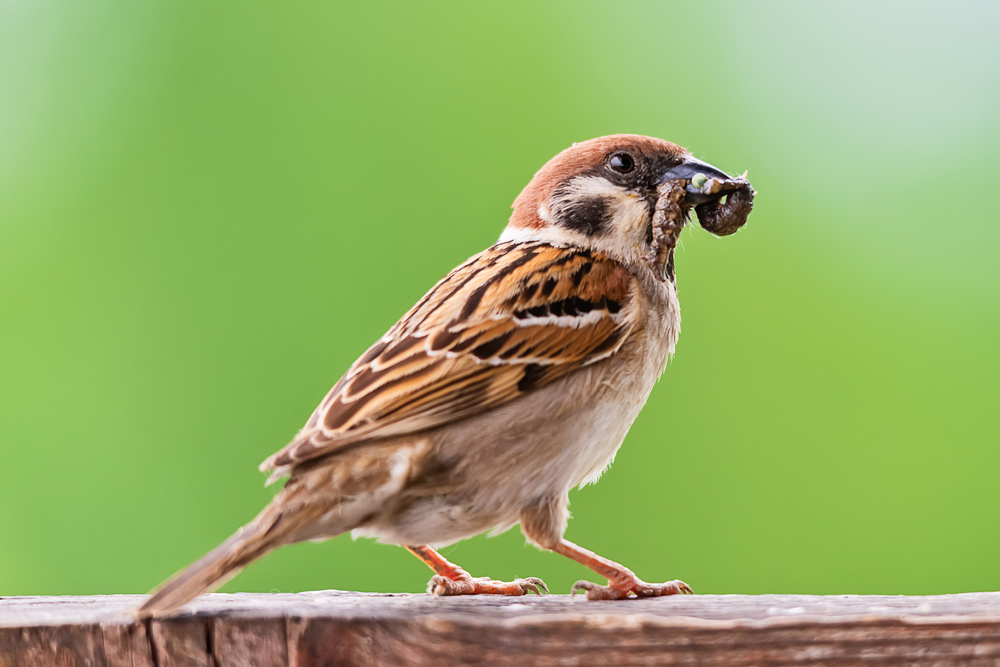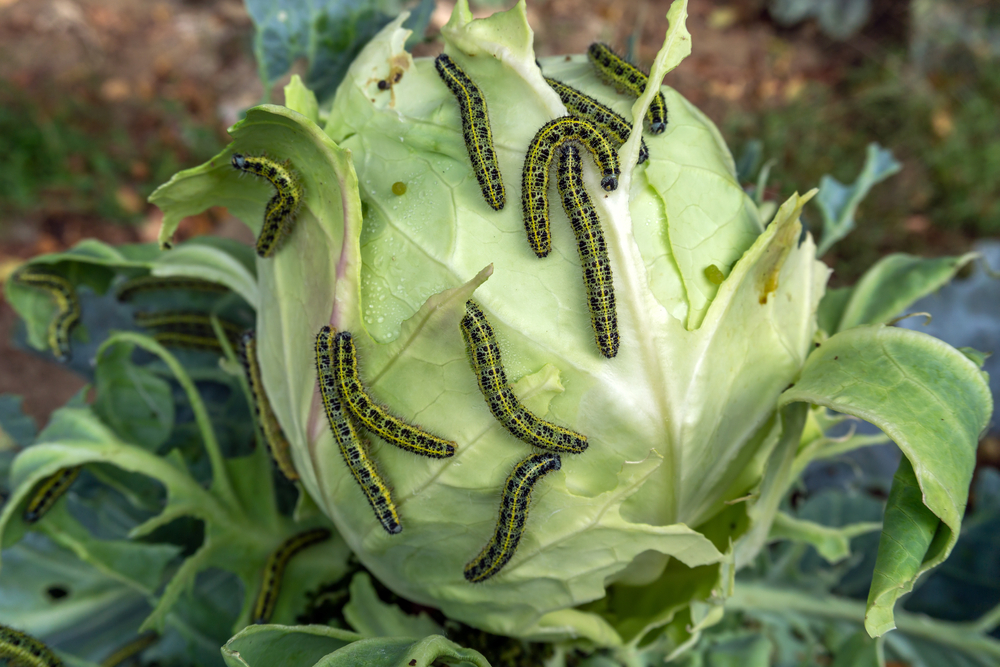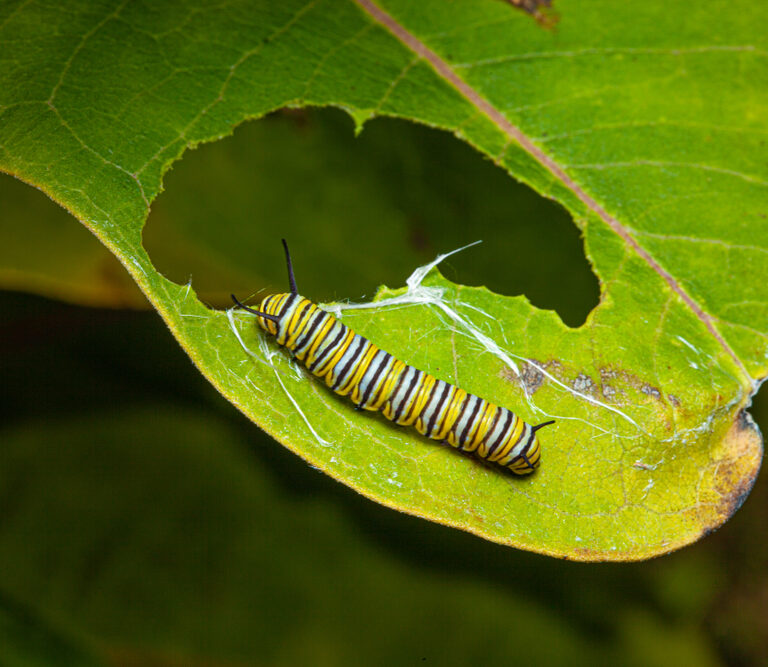Caterpillars are known for being the slow and gentle plant crawlers of the insect world, which is a total lie. From the start of summer until the fall, these insects can wreak havoc on orchards, gardens, and farms. That is because caterpillars are the larvae stage of moths and butterflies. During their time as caterpillars, their whole purpose in life is to eat plants until they cocoon. If left unchecked, they can become a seasonal headache.
Thankfully, getting rid of them is by no means a complicated job, but it does require some planning and dedication, mainly because there are so many types of caterpillar species across the US. It’s easy to confuse them for a completely different pest. Here you’ll find information about how to get rid of caterpillars.
Identifying the Type of Caterpillar
There are 11,000 different caterpillar species in the US. However, not all pose a danger to gardens or are even easy to find. Knowing what kind of caterpillar is damaging your garden will determine which course of action is the best. Different eradication methods suit specific types of caterpillars better. For example, organic insecticides are the best option to deal with insects that taste awful to their natural predators.
Caterpillars are the larvae of moths and butterflies. They are usually in that state for around 3 to 6 weeks before transforming into cocoons. Then they become either butterflies or moths and lay their own eggs, repeating the process.
Because of the large number of species, caterpillars you find in one region may be completely different from the other. If you can’t recognize the caterpillar, use an identification index. To identify these invaders, take note of their color, size, number of legs, and whether they’re hairy or not.
If you decide to look them up online, remember that their names change from country to country. A caterpillar that is common in the UK may have a completely different name in the US.
Best Ways to Get Rid of Caterpillars
1. By Hand
You can reduce the number of caterpillars significantly by removing them one by one from every plant. One less caterpillar is one less moth or butterfly that could lay dozens of eggs. This method works better in small home gardens where it’s easy to check all of the plants individually.
If you decide to get rid of them this way, make sure to wear thick gardening gloves because some caterpillars are stingy and poisonous. The most efficient way to deal with them is to fill a bucket halfway with soap and water, and place the caterpillars inside. The bucket makes it easier to collect them and the soapy water will kill them.
It’s not completely understood why soap is such an efficient method for killing bugs. It’s presumed that soap disrupts insects’ cell membranes. It also removes protective waxes and covers, so they cannot absorb water.
This method is also more suited for the non-squeamish. While most caterpillars are inoffensive, they can look quite intimidating. Looking unpleasant is one of their primary defensive mechanism because larvae are very much at the bottom of the food chain.
2. Organic Pest Control
Insecticides are the first idea that comes to mind when dealing with any pest that walks on more than six legs. However, many of these products could drift and damage crops. Heavy-duty chemicals could wipe out beneficial insects and damage the integrity of complete areas.
However, there are natural solutions that resemble insecticides. One of them is the use of nematodes. These are microorganisms that infect insects with deadly bacteria, and they usually won’t spread to areas where you don’t spray them. One of the main benefits of using them is that they don’t harm humans, animals, or crops – only insects.
You can buy nematodes online, although there’s a good chance your local gardening store can source them for you. The most common type is called Heterohabditis bacteriophora, which should be stated on the product’s label.
When it comes to applying nematodes, there’s hardly any difference from spraying an insecticide. Start by diluting the bottle of nematodes in a bucket filled with water. Make sure there’s about enough water to fill more than a third of your backpack sprayer or watering can.
Let the product sit in the bucket for five minutes, but make sure to stir it before you start to eliminate any lumps. Fill your watering can or backpack sprayer and start to distribute the product evenly across your garden. You should pause to stir the contents inside the tank now and then to avoid lumps that could create blocks.
3. Acquire or Attract Predators

Nature does a good job of balancing itself, but sometimes it needs a little push. Since caterpillars are basically the walking biscuits of the animal world, many predators would gladly clear them out for you. Two of the most straightforward solutions are birds and parasitic wasps.
How to Attract Birds:
Birds are the tamest solution to your caterpillar problem. While attracting birds to your garden is easy, it’s harder to attract the right species because not all birds eat caterpillars. You need to make your garden attractive for chickadees, bluebirds, orioles, sparrows, and wrens. To attract these types of birds, you need to provide:
- Food
While some birds prefer insects, this doesn’t mean their whole diet consists of them. Setting up a feeder or two with some seeds is a great way to get them coming to your garden. Many of the caterpillar-eating birds like sunflower seeds. Just make sure not to fill the feeders all the way to the top with seeds, so the birds don’t just rely on them and still have an appetite for insects.
- Water
Birds love natural bodies of moving water. These animals usually stay clear of puddles and static bodies of water. If you want to attract them, you need to set up a bird fountain or bath. Sun-powered fountains are the carnival attraction for birds in the neighborhood.
- Shelter
If there are no trees nearby where birds can nest, consider setting up a couple of birdhouses. Make sure they’re not too close to your bedroom unless you want to have the same schedule as the birds.
Purchase Parasitic Wasps
In a perfect world, the word “parasitic” and “wasp” would never go together. However, rest assured that these species of wasps are not as monstrous as they sound. Many of these wasps actively hunt for moth and butterfly eggs, laying their eggs inside them for their larvae to feed on. They’re often used for pest control, and you can buy these wasp eggs online. Make sure you get Trichogramma wasps, also known as the Moth Egg Killer.
These are flying insects that are 1 mm in length, so for the most part, they’re invisible to the naked eye. They’re harmless to crops and anything other than moth and caterpillar eggs. This is a solution that requires more planning than others. The trick here is to use the wasps early in the summer so they get a chance to get rid of caterpillar eggs before they hatch.
How to Repel Caterpillars Without Killing Them

Put a cardboard ring or aluminum foil at the base of your plants to deter them from crawling up. You can also use floating row covers at the beginning of the season, so nothing can get to the plant. Make sure not to do this too late in the season, otherwise, it will protect insects that are already inside of it. These options will only deter certain species and not all of them, but it goes a long way into controlling their numbers in your plants.
Are Caterpillars Dangerous?
Most caterpillars are harmless, but some species have spikes or hooks that can sting people when they’re handled. The way this works is that some species are covered in hair that, when in contact with skin, releases very painful poison. Identification of different species goes a long way in determining which ones have this type of urticating hairs.
Final Thoughts
There are many ways to prevent caterpillars but the best one is taking good care of your garden. Keeping an eye on your plants is the best way to prevent their numbers from growing in the first place. Because these are seasonal pests, make sure you prepare for summers – when most insects that represent a danger to your garden are active.
